Tube Flies and Fly Tying Tubes and Accessories
The Tube Fly Shop presents a range of tube flies and fly
tying tubes from Grays of Kilsyth, a Scottish fly
shop specialising in salmon flies, sea trout flies and trout
flies.
Our particular focus is on the manufacture and supply of
Grays Needle Tubes, ultra slim stainless steel fly tying
tubes, which have proven extremely effective in salmon,
steelhead and sea trout fishing since their introduction in
2008. Please visit our website
Grays of Kilsyth to view details of the full range of
flies, tubes and accessories available.
| |
|
|
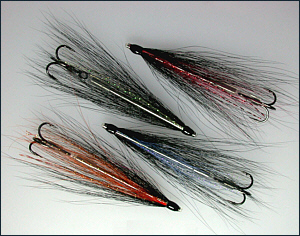 |
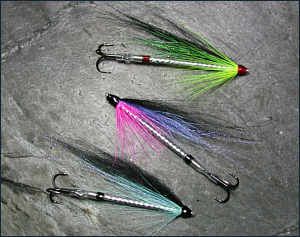 |
|
Sea Trout Needle Tube Flies |
More Sea Trout Tubes |
| |
|
|
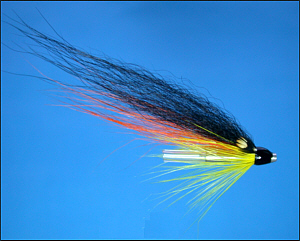 |
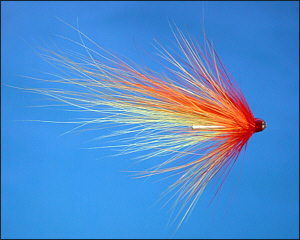 |
|
Wee Monkey Salmon Tube Fly |
Tubular Belle |
Tube Fly History
The origins of the
tube fly are unclear. It is said that a type of tube fly
"dressed on a hollow quill" was used by native North
Americans fishing for west coast salmon more than a century
ago.
Tube flies were in use here in Britain before
the Second World War. Alexander Wanless, an enthusiastic
advocate of what he called "thread line fishing"¯, a method
he developed for presenting light baits or flies to trout
and salmon using a fixed spool spinning reel, described his
own specially adapted salmon flies for threadline use in his
books on the subject, "Thread Line Fly Fishing for Salmon" and
"¯The Angler and the Thread Line" as early as the
nineteen thirties. These included salmon flies dressed on
hollow barrel leads, designed to be armed with a "sliding
tail hook", a single hook in Wanless's early flies, "so that when a fish is hooked the fly will slide up the
line out of harm`s way or rather to prevent it from levering
the small hook out of the salmon`s jaw"¯. Charles
Playfair & Co, of Aberdeen, are thought to be the first
company to make and sell tube flies commercially, around
1945. The tube flies they offered are said to have been
created by one of their fly dressers, Mrs Winnie Morawski,
dressed initially on sections of feather quill, with the
hook fixed inside the hollow quill. The later use of plastic
tubing made the tube fly more durable and, combined with a
free swinging hook, commonly a treble hook, at the tail,
helped eliminate the problem of leverage associated with
longer salmon flies, which were known to cause the loss of
many hooked fish through the loosening of the hook hold
during play. In the post war period, developments in the
design of
salmon flies continued apace, including the adaptation
of all kinds of tubing for the making of salmon tube flies.
The Tube Fly Today
In recent years, there
have been many innovations in fly patterns and designs of
fly on both sides of the Atlantic, for Atlantic salmon
fishing, Pacific salmon and steelhead fishing, together with
those intended for sea trout fishing here in Britain and
Ireland. Whatever his chosen quarry, the modern fly
fisherman has a great many weapons at his disposal, ranging
from the more traditional flies dressed on single, double or
treble hooks; snake flies and needle flies; and a whole
range of tube flies utilising a variety of materials,
including tungsten, copper, brass, stainless steel,
aluminium and various types of plastic, often used in
conjunction with various attachments, such as turbo discs,
diving vanes, cone heads and spinheads.
Some Tube Flies
A small selection of salmon tube
flies dressed on fine stainless steel needle tubes |
|
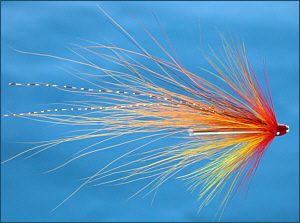 |
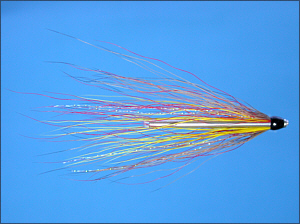 |
|
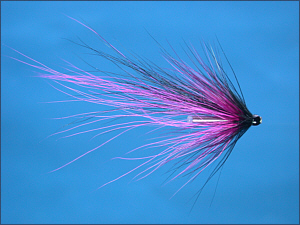 |
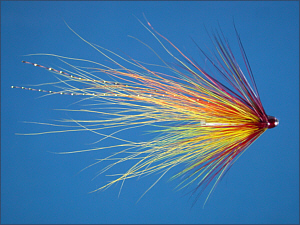 |
|
|
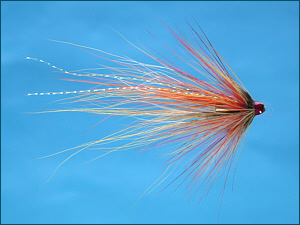 |
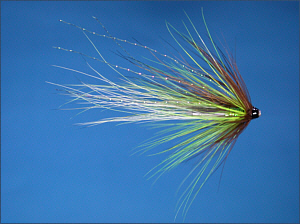 |
|
|
|
|
The tube fly then has
proven a most versatile weapon in the fly fisher's armoury.
It has found its way, over the years, into the fly boxes of
fishermen worldwide, from Alaska to Russia, whether they are
after Atlantic salmon and sea trout or Pacific salmon and
steelhead. For early and late season salmon fly fishing on
the rivers of the UK, the traditional salmon fishermen's fly
box will include a range of heavy tubes flies, dressed on
brass and copper tubes of varying lengths, or flies
incorporating cone heads of tungsten or brass, fished off
high density lines, to get the fly down quickly to a good
depth to cover the salmon in their cold water lies. He is
also likely to have a selection of the smallest of plastic
tube flies for floating line grilse fishing in the shrunken
highland streams in the dry summer months. In between he is
likely to carry a range of tube flies in all shapes, sizes
and materials, sufficient to meet the wide variety of water
and weather conditions likely to be met on our salmon and
sea trout rivers throughout the fishing season. The tube fly
has indeed proven a great success, for a variety of species
and fly fishing situations.
Needle Tube Flies
Initially, though, it
was in the possibilities presented by the tube fly as a
lure, not so much for salmon, but for summer sea trout that
my main interest lay. Following the development, in 1999, of
the Needle Fly, the slimmest of all lures for nocturnal sea
trout fishing, further extended experiments over the
following decade would
lead ultimately to the development, in 2008, of the ultra slim
stainless steel
Needle Tube Fly.
|
Needle Tubes and Tube Flies
Illustrated below are just a few of the tubes, tube flies
and associated accessories available online from Grays of
Kilsyth. See:
ONLINE TUBE FLY SHOP
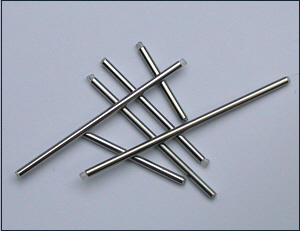
Grays Needle Tubes
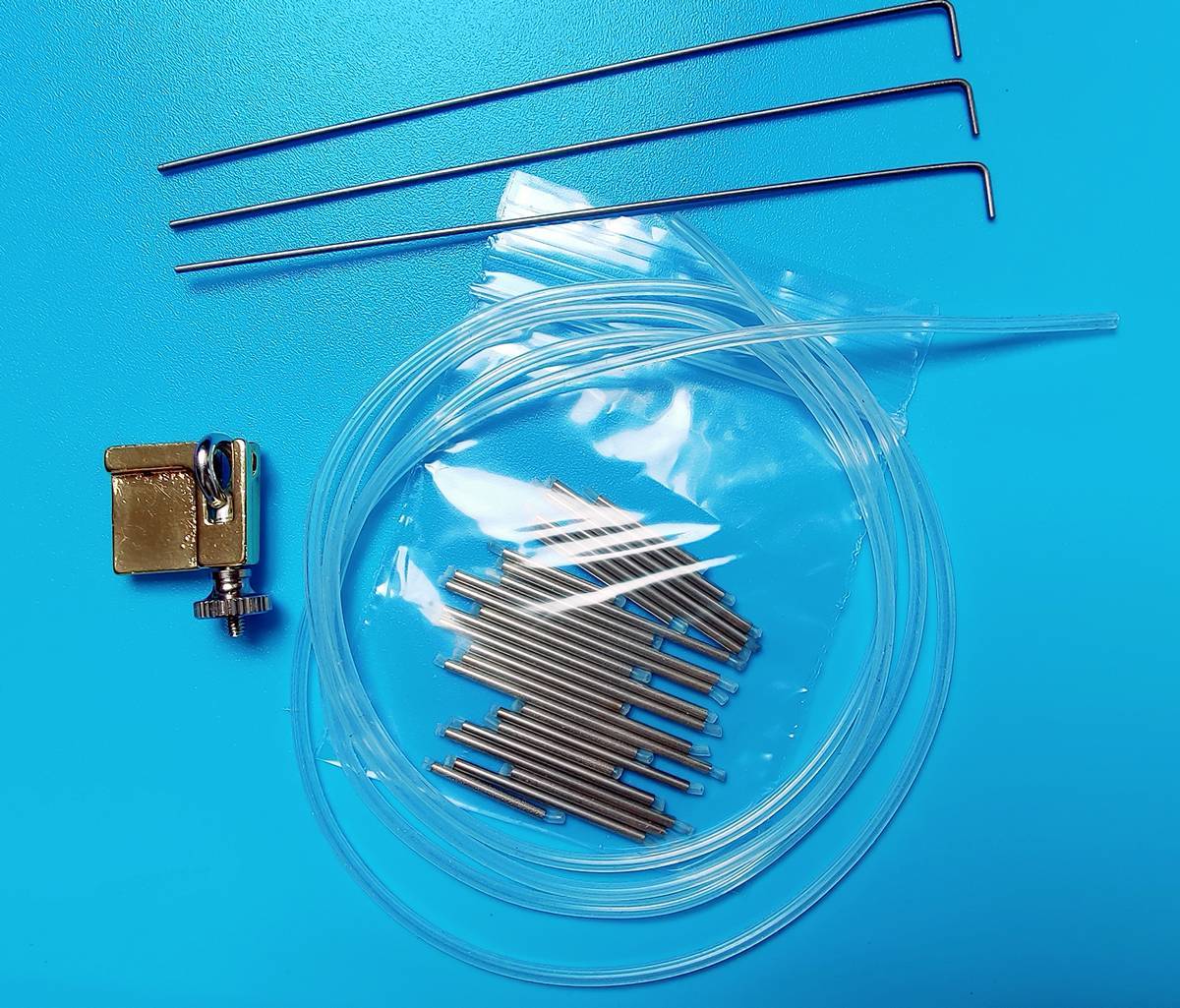
Grays Tube Fly Adaptor

Wee Monkeys
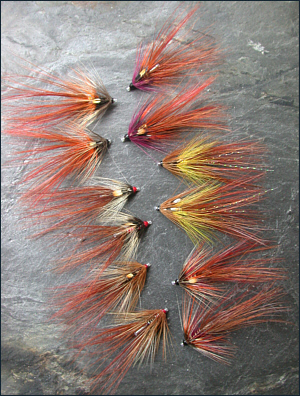
Irish Shrimp Needle Tube Flies
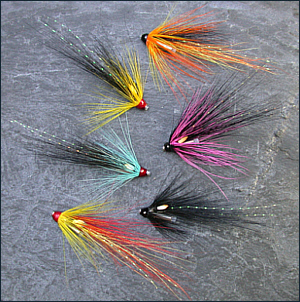
Minitubes
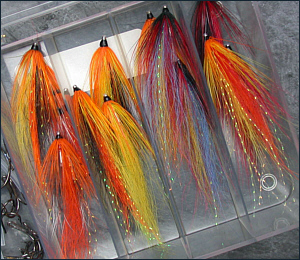
Scottish Shrimp Tube Flies
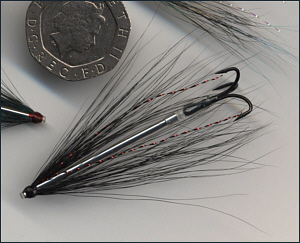
Sea Trout Needle Tube Fly See the whole
range at
Grays of Kilsyth
Plastic Fly Tying Tubes
For excellent value in plastic fly tying
tubes see
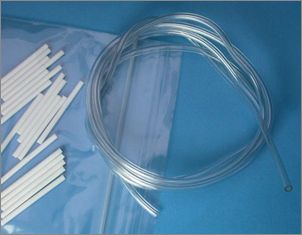
Plastic Fly Tying Tubes
|